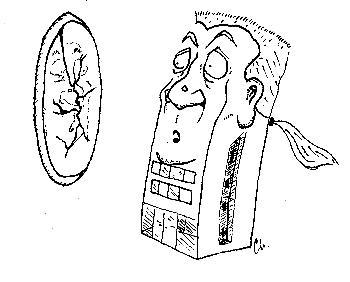
News
Cambridge Residents Slam Council Proposal to Delay Bike Lane Construction

News
‘Gender-Affirming Slay Fest’: Harvard College QSA Hosts Annual Queer Prom

News
‘Not Being Nerds’: Harvard Students Dance to Tinashe at Yardfest

News
Wrongful Death Trial Against CAMHS Employee Over 2015 Student Suicide To Begin Tuesday

News
Cornel West, Harvard Affiliates Call for University to Divest from ‘Israeli Apartheid’ at Rally
Ivory Towers of Concrete

April showers may well bring May flowers, but this year April sunshine has been bringing out scores of Harvard sunbathers. Even the most dour students have found themselves tempted outside, content to forget work for a few hours and dedicate themselves to the wholesome pursuit of melanoma. After all, there could be few places more beautiful to lie outside than in the middle of Harvard Yard—except when it is barricaded off for fertilization—or down on the grassy banks of the Charles.
Alas, those who have looked around will doubtless have recognized the fallacy here: Harvard’s landscape is blotted by hideous concrete towers that would seem more at home in East Berlin (or, perhaps, B.U. East) than they do in this otherwise-Edenic corner of Cambridge. The very words “Mather House” should strike fear into aesthetes throughout the country. Speaking in 1984 on a proposed extension to the National Gallery in London, the Prince of Wales said that it would resemble “a monstrous carbuncle on the face of a much-loved and elegant friend.” No one could possibly think that he was speaking of Harvard—carbuncles abound and the face of the campus has already been permanently disfigured. The University, meanwhile, acknowledges as much by having certain building airbrushed out of publicity photos.
The issue at stake is not just that monoliths like the Holyoke Center spoil the views of students and tourists alike. It must also be recognised that, melodramatic as it may sound, these ugly, dated edifices drastically reduce the quality of life for many Harvard students. Even the most laid-back diner will agree that it is infinitely more pleasant to grab a snack in the Barker Center’s Rotunda Café with its wood floors and airy feel than it is to sit in the psuedo-Soviet drabness that is the Greenhouse in the Science Center. There is no good reason why scientists should not be allowed to work in as pleasant and welcoming an atmosphere as students of the humanities; yet the follies of Bauhaus architecture clearly ensure that such inequality between the arts and sciences exists.
The same principle—although on a far greater scale—accounts for Harvard’s patent housing inequality. Administrators and students, with vested interests of course, seek to perpetuate the old lie that each House possesses its own unique and equally desirable character. However, anyone with the slightest amount of common sense and objectivity can see that the nature of one’s Harvard experience depends substantially upon whether the housing lottery sends their blocking group to luxuriate beneath Eliot’s turquoise bell tower or condemns them to three years of purgatory in the Leverett Towers.
It is, unfortunately, simply not feasible to redo these buildings at the moment. Even if they were not architecturally listed for their historical significance, the inconvenience caused would be crippling and the costs would be staggering. (Building another River House is also not an option as local residents, justifiably fearing the construction of another Peabody Terrace, remain implacably opposed to any such proposal.) Instead these buildings will remain as potent reminders of the folly of pursuing the latest fads without a thought of the lasting impact of one’s decisions. As Harvard begins to examine in earnest the potential for moving into Allston, President Lawrence H. Summers and his advisers should realize that the important decision is less what they choose to house there, but how they choose to house it.
—ANTHONY S.A. FREINBERG
Want to keep up with breaking news? Subscribe to our email newsletter.
